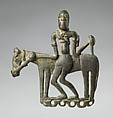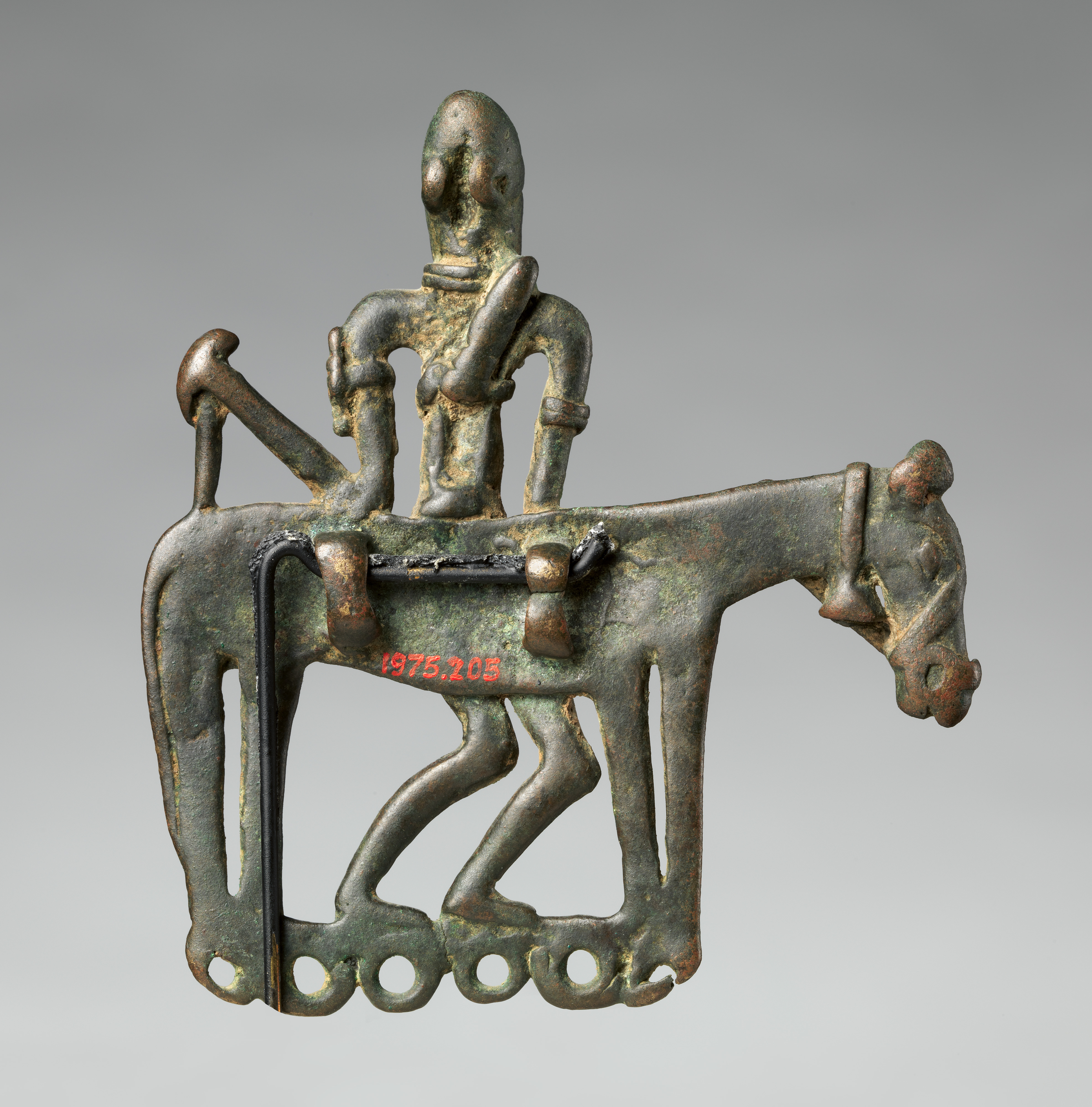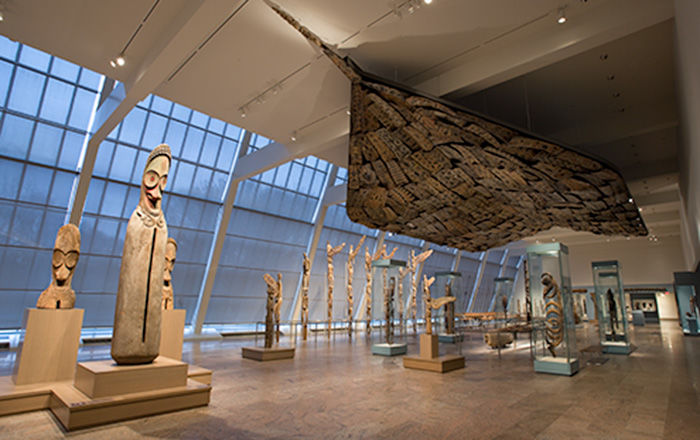Equestrian pendant
A European visitor to Dogon country early in the 20th century wrote of the "astonishing perfection" of the ornaments created by local blacksmiths through the lost-wax process. While copper-alloy ornaments have been created in the Dogon area for almost a millennium, exact dating of these miniatures remains largely speculative, established on the basis of stylistic analysis. Interestingly, there is no evidence of copper mining in the region. The metal may have been obtained through trans-Saharan trade networks that brought copper from Spain, North Africa, and the Sahara to commercial centers of the Sahel and Sudan.
The intimate format of this two-dimensional pendant suggests that it was worn on the body as a talisman. Such personal embellishments were crafted to respond to the specific needs of a patron. Concerns ranged from help with conceiving children to gaining political influence. The pendant’s cost was proportionate to the scale of the owner’s request and the complexity of the metal casting. Associated with power and prestige, horses were present in the southern Sahara by the first millennium B.C.E. Bred in the region by the fourteenth century, horses continued to be imported in large numbers, and at great expense, from northern Africa and Bilad al-Sham (the eastern Mediterranean).
This image cannot be enlarged, viewed at full screen, or downloaded.
This artwork is meant to be viewed from right to left. Scroll left to view more.






